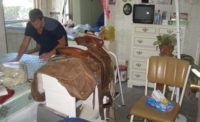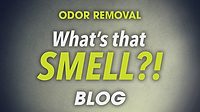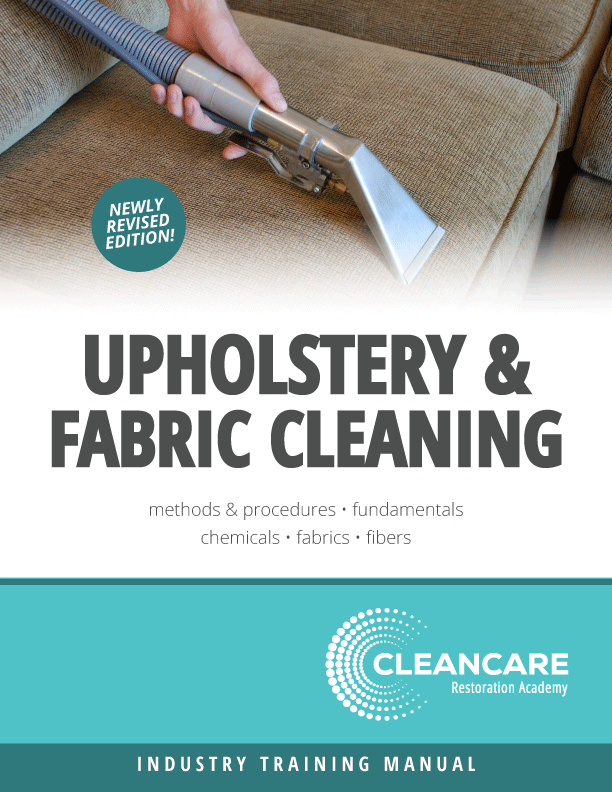Sniffing Out New Profits in Odor Elimination
Do more jobs, faster, using innovative liquid + gas method


This is part of a large commercial loss, detailed on the final page of this article. When losses reach a certain size, restoration companies can reach out to businesses specializing in large losses for industrial-grade equipment.

WrightWay preps for the odor removal process.

More deodorizing being done inside the YMCA.

A massive YMCA facility in Florida was heavily damaged during a storm. The loss included the need for odor removal.

As you can see from the images, this was truly a large loss job with a lot of different components — like thousands of dollars in expensive exercise equipment.






Odors, good or bad, vary vastly from person to person. It is our own perception that governs our sense of smell in the most basic of terms. A more technical overview of our fundamental knowledge of aroma is mediated by the olfactory nerve.
The olfactory receptor (OR) cells are neurons present in the olfactory epithelium, a small patch of tissue in back of the nasal cavity. There are millions of olfactory receptor neurons that act as sensory signaling cells. Each neuron has cilia in direct contact with air. The olfactory nerve is considered the smell mediator; the axon connects the brain to the external air. Odorous molecules act as a chemical stimulus. Molecules bind to receptor proteins extended from cilia, initiating an electric signal.
So, what does all that fancy technical lingo mean? It means we have a fairly advance way to know what smells we like and dislike. Certain smells can become lodged in our memory; like the odor of a specific location: Grandma’s house on Sunday afternoon with cookies in the oven; a memorable moment or person in our life; every 4th of July, just after the fireworks have stopped. As a restoration contractor, a memorable smell could be from one of many catastrophic events like a grocery store after a hurricane, where freezers have gone without power for weeks in summer heat and rotten food is seeping from the door seals. Or what about the familiars smell of a house fire.
Few things have an effect on us like odors do. They are impossible to forget and with worry and concern, our customers can almost imagine they exist, even when they don’t. With these challenges both good and bad, how do we as restoration professionals solve one of our toughest challenges: removing odor?
As professionals, our training has been fairly solid. Technicians trained in odor removal through conventional instruction are taught the four principles of eliminating unwanted smells:
1. REMOVE – It is a logical starting block: locate and remove the source of the odor. Most of the time, during fire and smoke restoration, this may be too difficult to do before cleaning the area.
2. CLEAN – Once the source of the odor is removed, thoroughly clean any surfaces or items affected by the source. Carpets, furniture, clothing, and drywall may also take on the scent if they are exposed long enough to the source. All source-affected surfaces must be cleaned to prevent the smell from coming back.
3. TREAT – Treat by counteracting, masking or neutralizing the smell. Several odor removal products are capable of penetrating surfaces to remove the unpleasant smell effectively. Every material has its own physical properties that determine which methods to use for effective odor elimination.
4. SEAL – Seal the surface to trap what scent does remain. Odors are created by airborne particles that can be sealed away for good.
High-Tech Spin, Old Technology
What if there was another option outside those four traditional odor removal steps? What if the trainers of professionals came across a new technology, more effective and faster than the industry’s currently accepted methods? Would they embrace this advancement and elevate the training of our industry? What if I told you it is a high-tech spin on a 100-year-old technology?
These are some of the crazy one-liners I was expecting to hear walking into my first demonstration the ProKure1 System while at a trade show in Vegas. Oddly enough, I was greeted with science and a ton of it. Imagine a substance that obliterates odor-causing molecules. Not mask them, but literally destroy the cellular structure of odor-causing molecules in seconds. Imagine that this substance is also ecologically safe and leaves no harmful residue. And imagine the substance can be quickly produced at a job site in both liquid and gas form and in any quantity. Don’t take my word for it, though. Check out this case study:
Case Study : Lightning-Sparked Commercial Fire
The WrightWay Emergency Water Removal is a family owned and operated restoration company in North Venice, Fla. The Reynolds family was working hard to break into the commercial market when they landed a lightning fire damage project that completely affected a local YMAC.
Soot and smoke damaged had settled over the entire building to include the racquet ball courts, dance and spin class rooms, indoor basketball courts, large workout area and GYM, office spaces, restrooms and locker rooms, and all support areas. This was a large space with ceiling height in many areas over 35 feet, and the HVAC systems were on during the fire and were all completely affected. The sprinklers upstairs had come on as designed to extinguish the fire, and had soaked much of the same affected areas.
The Reynolds are close friends of Aaron and Karen Foreman of National Drying Technologies, or NDT. Josh knew even with all of the equipment and staff at their disposal, this loss was different; the sheer size and complexities were a lot to handle while still serving other customers. That’s when NDT was called in for backup.
As large-loss drying and cooling equipment were set up, NDT also stepped in to help with project management and billing. Aaron also suggested ProKure due to the intense smoke odor in the facility. One 10-hour treatment with the ProKure1 System, which included a wet application and an off gas, completely eliminated the smoke odor.
There has been a lot of discussion on odor removal techniques like chemicals, ozone, and hydroxyl. Be sure to do your research and find the best fit for the jobs you handle, and your company’s mission to restore properties to pre-loss condition with happy customers every time.
Looking for a reprint of this article?
From high-res PDFs to custom plaques, order your copy today!












